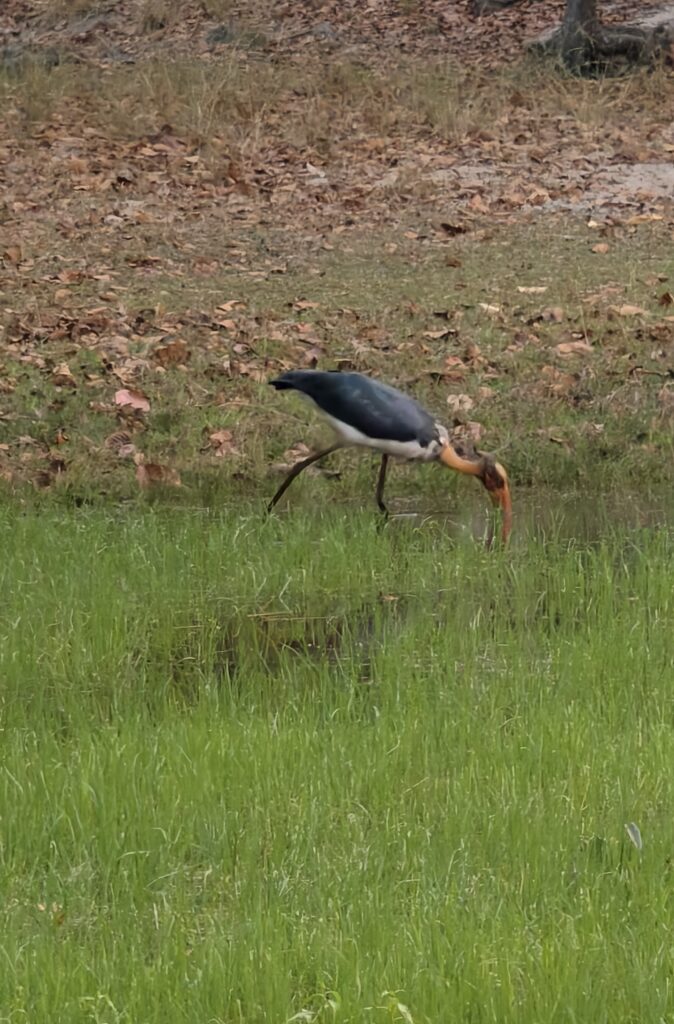
The Lesser Adjutant Stork (Leptoptilos javanicus) is one of the most striking and rarely spotted storks of South and Southeast Asia. Known for its bare yellow-orange neck and heavy bill, this bird is both fascinating and imposing. Spotting it at Bandhavgarh National Park is a treat for bird enthusiasts.
Appearance & Identification
- Tall, large-bodied stork with a bare, rugged neck.
- Massive wedge-shaped bill built for catching prey.
- Dark upperparts and pale underparts.
- Unlike its cousin, the Greater Adjutant, it appears slightly slimmer and less bulky.
Behavior in Bandhavgarh
The Lesser Adjutant is usually solitary and shy. In Bandhavgarh, it is often found near grasslands and shallow water pools, foraging for:
- Fish
- Frogs
- Small reptiles
- Carrion
This makes it an important scavenger in the ecosystem.
Habitat & Range
- Prefers swamps, wetlands, marshes, and riverbanks.
- Found in pockets across India, Nepal, Bangladesh, Myanmar, Thailand, and Cambodia.
- In India, sightings are rare, making Bandhavgarh a noteworthy location.
Conservation Status
The species is listed as Near Threatened by the IUCN. Major threats include:
- Wetland destruction
- Hunting and poaching
- Disturbance from human activity
Protecting areas like Bandhavgarh is crucial for the survival of this rare stork.
Fun Facts
- The name “Adjutant” comes from its stiff, military-like walk.
- Lesser Adjutants are quieter than most storks, often seen foraging in silence.
- They are vital scavengers, helping keep wetland ecosystems clean.
Conclusion
The Lesser Adjutant Stork at Bandhavgarh is a rare sighting that highlights the park’s rich biodiversity. Its presence is not just a joy for birdwatchers but also a reminder of the importance of conserving India’s wetlands for future generations. The Lesser Adjutant Stork stands as a symbol of rich biodiversity and the urgent need to protect India’s wetlands.”
